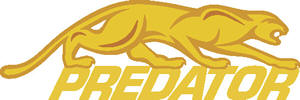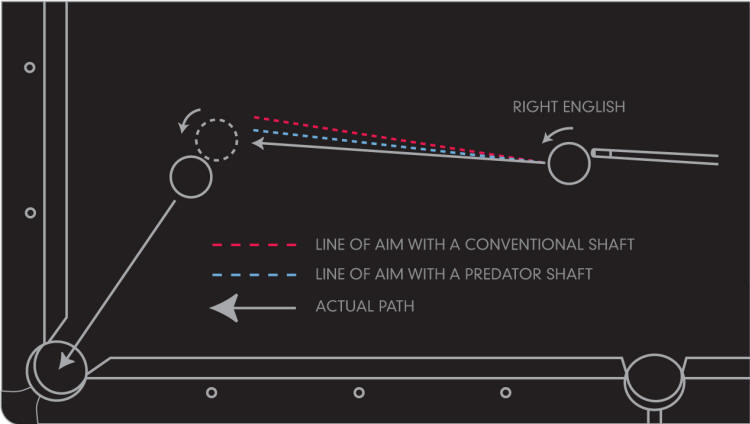|
Click Here for Predator Index |
|
TIPS ON BREAKING BY CHARLIE WILLIAMS A great beak requires power and accuracy. Many people tend to treat power and accuracy separately, but they are actually intertwined with each other. If you have a powerful stroke, you must have good technique and be accurate enough in order to transfer maximum power into the rack. The following topics will focus on both power and accuracy and will help you direct all the energy of the stroke to the point you want to hit. The first key to a good breaking technique is good alignment. This simply means making sure that your stroke, your eyes, and your body are aligned correctly with your target point, which should be the center of the head ball in the rack. Keep your eyes on the point. After the preliminary practice strokes where you look at the cue ball and also the line of your follow through on, your eyes should lock in on the exact point of contact of the headball for your break. Your eyes should remain on that point from the beginning of the backstroke to the end of the follow through.
To get maximum power on the break, use your legs to give your arm and stroke more speed and momentum. Using your arm alone will not release your true stroke potential. By adding the strength of your legs, and pushing off your back foot, you will increase your acceleration and develop explosive stroke power. Finally, practice. There is no other way. Knowing how is helpful but useless if you can't execute. I recommend starting off by focusing on accuracy and follow through. Practice until you can consistently hit the head ball full with a medium stroke stop shot. When you can consistently hit the headball where the cue ball stops or jumps back a little then stuns, add 10% more in power. Keep practicing and adding power until you can hit the cue ball with 100% power and still hit the head ball with accuracy. Good luck and Happy Hitting! HOW TO ADJUST TO PREDATOR
When you use English or sidespin, cue ball deflection often causes your cue ball to miss its target. With Predator’s minimal deflection, you don’t have to adjust for English as you would with a conventional shaft. The less you have to adjust your aim, the more chance you have to make the ball. Drill: To be consistent, set up a simple cut shot that you will repeat several times. Aim as if you were aligning for a center ball hit and see if, and how much, you have to adjust. Start with no English, and then repeat the same shot several times using progressively more outside English. Do the same drill with inside English and see how much you have to adjust. With this drill, you will quickly learn how little you have to compensate with your Predator product. You will soon realize how Predator will take your game to the next level. PERFORMANCE OF THE CUE Although it is important that the butt and joint are balanced and provide a solid feel, the shaft, more than anything else, determines how the cue performs. The butt contributes to comfort, style and in the end provides feedback on the shot. AVOID BENDING YOUR SHAFT WHILE BREAKING When breaking, most players tend to bend the shaft on the follow-through. Wood does not a have perfect memory, therefore bending the shaft may cause it to warp. The only way to keep a break cue shaft from bending is to pick up your bridge as you follow through. In other words, don't let the shaft bend on the table. |
Click Here for Predator Index
Predator
Technology |
C4 Technology
|
Warranty & Cue Care
|
Uni-Loc
|
PROS
|
Joint Styles
|
Tech Tips |
Playing Tips


 A
superb follow through is also key. Many players fail to follow through, or do so
without confidence and force. You must come through the cue ball decisively and
make sure your cue extends well past the point where you struck the cue. An
average world class follow through will have the cue ending near the center line
of the table (a good 15-24 inches of follow through). Make sure you follow
through on a straight line to the point you want to hit. If you have a long
follow through with power, but an inconsistent line of follow through, you will
consistently miss your target. To practice this, draw a line or mark a place on
the table with a piece of chalk, and practice breaking to see if your stroke is
true to your follow through line. Also, to help you follow through straight, use
a closed hand bridge and make sure that you do not unravel your closed bridge
until after the follow through is complete.
A
superb follow through is also key. Many players fail to follow through, or do so
without confidence and force. You must come through the cue ball decisively and
make sure your cue extends well past the point where you struck the cue. An
average world class follow through will have the cue ending near the center line
of the table (a good 15-24 inches of follow through). Make sure you follow
through on a straight line to the point you want to hit. If you have a long
follow through with power, but an inconsistent line of follow through, you will
consistently miss your target. To practice this, draw a line or mark a place on
the table with a piece of chalk, and practice breaking to see if your stroke is
true to your follow through line. Also, to help you follow through straight, use
a closed hand bridge and make sure that you do not unravel your closed bridge
until after the follow through is complete.
